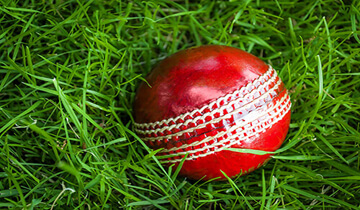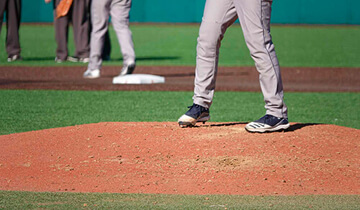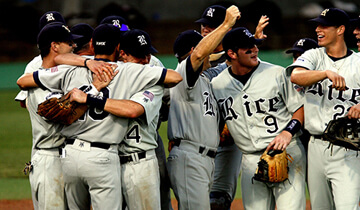Baseball is full of unique lingo that can sometimes be confusing, especially for new fans. One common abbreviation heard during baseball broadcasts and seen in box scores is “BB.” But what exactly does this little combination of letters mean?
BB stands for “base on balls” and refers to when a batter receives a walk in baseball. This occurs when the pitcher throws four pitches that are out of the strike zone, allowing the batter to advance to first base freely. It is essentially a “free pass” for the batter.
Base on balls, or walks, are an important strategic part of baseball. They allow a batter to get on base without getting a hit. Walks are considered when calculating a player’s on-base percentage, an important offensive statistic. Higher walk totals indicate a batter with a good eye and discipline at the plate. Pitchers with high walk totals may need to work on their control.
So next time you see “BB” in a baseball context, you’ll know it refers to a base on balls or walk. This little stat reveals insights about batting skills, pitching control, and overall approach to the matchup between batter and pitcher. Just another example of the rich lingo that makes baseball so fascinating!
Definition and Meaning of BB
What is BB?
BB stands for “base on balls”. It refers to a walk i.e. when a batter is awarded first base after four pitches are thrown outside the strike zone. BB is also called a “free pass” or “pass” in baseball lingo.
Explanation
In baseball, batters stand at the plate and try to hit pitches thrown by the pitcher. The pitcher aims to throw strikes - pitches that pass through the strike zone over home plate. The batter tries to avoid swinging at balls - pitches outside the strike zone.
If the pitcher throws 4 balls (pitches outside the strike zone), the batter is awarded first base automatically. This is called a “base on balls” or BB. The batter can then walk to first base without risking an out by swinging.
BBs are considered a positive outcome for the batter, as they allow the batter to reach base safely. BBs also prolong the batting team’s time at bat. Pitchers aim to limit walks by throwing strikes and inducing the batter to swing. A high number of BBs indicates poor control by the pitcher.
Batters with good plate discipline and pitch recognition skill can draw many BBs, contributing positively to their on-base percentage (OBP). Power hitters are often pitched around intentionally via BBs, rather than allowing them the chance to hit home runs. Leading the league in BBs is thus considered a sign of strong offensive ability.
In summary, BB or “base on balls” refers to a walk awarded to batters after four pitches out of the strike zone. It allows the batter to reach first base safely and is considered a favorable outcome for the batting team.
Reasoning Behind the Term “Walk”
A batter is allowed to “walk” to first base after being awarded a base on balls.
In baseball, a “walk” refers to when a batter is awarded first base after receiving four pitches deemed to be balls by the umpire. This is also referred to as a “base on balls.”
The batter is permitted to leisurely walk to first base, rather than having to run like they would after getting a hit. This is why it is called a “walk” - the batter can take their time and stroll to the next base. The term originally came from the fact that prior to 1887, it was common for umpires to literally walk with the batter down to first base after awarding them their base.
So the key distinction is that with a walk, the batter can walk to first, whereas with a hit or error they have to run. A walk is treated almost like a gift or favor to the batter for not swinging at pitches out of the strike zone, hence why they are allowed to walk casually rather than run.
This differentiates it from other ways of getting on base like a hit or error where the batter runs.
The main difference between a walk and other ways of getting on base is that the batter doesn’t have to run on a walk.
On a typical hit or error, the batter has to sprint to try to reach first base safely. There is urgency and effort required by the batter.
With a walk, the batter can take a leisurely, measured pace down the line knowing they are entitled to reach first base without challenge. They don’t have to rush or exert energy.
This emphasizes the idea that a walk is a sort of favor or gift from the pitcher who failed to throw good pitches. The batter is rewarded for their patience and discipline by getting a free pass to first without doing any running.
So in summary, the walk enables a batter to stroll to first, whereas on hits/errors they must run hard. This key difference in speed and effort is why the term “walk” is used to describe a base on balls.
Recording BB in Baseball Scoring and Stats
Official scorekeeping denotes it as “BB”
In baseball scorekeeping, a base on balls, also known as a walk, is denoted by the abbreviation “BB”. This notation is used by official scorers to record when a batter is awarded first base after receiving four pitches outside the strike zone, without swinging at any of them.
The “BB” abbreviation has been the standard way to denote a walk in baseball scoring since the early 20th century. It is universally recognized by players, coaches, statisticians, and fans alike when looking at a box score. The lowercase “bb” is sometimes used, but “BB” is the preferred uppercase style.
When recording a walk, the official scorer fills out the box score with the batter’s name, followed by “BB” in the plate appearances column. Any additional details like if it was an intentional walk are noted as well. But the simple “BB” shorthand signifies to anyone reading the box score that the batter reached first base via a base on balls.
Used to calculate on-base percentage (OBP) which measures ability to get on base
One of the main reasons that baseball records walks as “BB” is to calculate a player’s on-base percentage (OBP). OBP measures how frequently a batter reaches base per plate appearance.
The formula for OBP is:
(Hits + Walks + Hit by Pitch) / (At Bats + Walks + Hit by Pitch + Sacrifice Flies)
So walks, recorded as “BB”, are a key component of that OBP calculation along with hits and hit by pitches. By reaching base via walks as well as hits, players can boost their overall OBP. A high OBP is valuable as it means the batter is avoiding making outs and getting on base more often where they can score runs.
Many modern analysts consider OBP to be as or even more important than batting average. So the “BB” notation allows statisticians to easily include walks in OBP analysis to evaluate a hitter’s overall ability to get on base.
BB rate specifically measures walk frequency
In addition to OBP, baseball analysts also look at a player’s walk rate or walk percentage. This measures what percentage of a player’s total plate appearances end in a walk.
Again walks recorded as “BB” are used to calculate BB%:
BB% = (BB / Plate Appearances) x 100
Players with a high BB% are adept at working counts and not swinging at pitches out of the zone. A 12% walk rate is considered excellent. Walk rates above 10% indicate an elite batter with exceptional plate discipline.
By denoting walks with “BB”, official scorers enable the calculation of this important statistic that directly measures a batter’s walk frequency and plate discipline over a period of time.
Intentional walks (IBB) counted separately
When a batter is intentionally walked with four consecutive pitches wide of the strike zone, this is denoted slightly differently in the box score as “IBB”.
An intentional base on balls does not accurately demonstrate the batter’s plate discipline, as the walk was deliberately given regardless of the pitch location.
So statisticians want to separate intentional walks from unintentional walks in their analysis. By recording intentional walks as “IBB”, scorekeepers enable this differentiation in the data.
Therefore when calculating walk rate and other stats like OBP, “IBB” are excluded, while “BB” are included to get an accurate measure of the batter’s actual walk frequency and plate discipline.
Importance of Walks for Batters and Pitchers
For Batters
Walks are very important for batters in baseball for several reasons. Firstly, drawing walks demonstrates good plate discipline and an ability to discern balls from strikes. Batters who are patient and don’t chase after pitches out of the strike zone tend to draw more walks. This helps them get on base more often without having to get hits.
Secondly, walks allow the batter to advance to first base without swinging the bat. This conserves energy and reduces the chance of making an out. Walks essentially give the batter a free pass to first base. Even if the next batters make outs, the walk still puts a runner on base and in scoring position.
Finally, walks raise the batter’s on-base percentage (OBP). OBP measures how frequently a batter reaches base and is considered one of the most important offensive stats in baseball. Patient hitters with higher walk rates have higher OBPs, which makes them more valuable offensive players. Walks are essentially as good as hits for getting on base.
For Pitchers
From a pitcher’s perspective, walks are something to be avoided. Walking too many batters suggests issues with command, control, and pitch location. Pitchers who walk a lot of hitters are giving out too many free passes and allowing runners on base.
This can come back to haunt the pitcher when those walks turn into runs. Walks often lead to big innings for the opposing offense if they string hits together. Pitchers with high walk rates tend to allow more runs.
Walks can also drain pitch counts quickly, forcing pitchers out of games earlier. Pitchers need to be efficient with their pitches and limit walks to go deeper into games. Walks pad the opponent’s pitch count as well by driving up the pitcher’s pitch count.
In summary, batters look to draw walks as much as possible, while pitchers want to limit them. Walks indicate plate discipline for hitters but control problems for pitchers. Both sides recognize the importance of the walk as a strategic part of baseball.
Walks as a Way to Reach First Base
Compare to Other Ways of Reaching First Base
Unlike hits, errors, and hit by pitch, does not affect batting average.
Getting walked does not count as an at-bat, so it does not affect a player’s batting average. Batting average is calculated by dividing the number of hits by the number of at-bats. Since a walk is not considered an at-bat, it does not factor into this calculation.
On the other hand, hits, errors, and hit by pitches are all considered at-bats, so they do affect a player’s batting average. For example, if a player gets a hit in an at-bat, it will raise their batting average. If they strikeout or make an out, it will lower their batting average.
Counts for on-base percentage unlike sacrifice hits.
While sacrifice hits do not count towards a player’s on-base percentage, walks do. On-base percentage (OBP) measures how frequently a batter reaches base. It is calculated by dividing the sum of hits, walks, and hit by pitches by the sum of at-bats, walks, hit by pitches, and sacrifice flies.
Since sacrifice hits are counted as outs, they lower a player’s OBP. Walks, however, allow a batter to reach first base safely, so they increase a player’s OBP. Drawing walks is considered a skill, since patient hitters can work out walks even when pitchers are trying hard for strikeouts.
Strategic unlike hit by pitch.
Getting hit by a pitch is largely accidental and does not involve much strategy by the batter. Walks, on the other hand, are primarily strategic. Patient batters can watch for their pitch and draw walks even when down in the count. Batters with good plate discipline excel at working walks.
Drawing walks requires the batter to lay off pitches out of the strike zone and wait for one to their liking. When hitters are selective and disciplined at the plate, they can strategically draw walks to get on base. So while hit by pitches are random occurrences, walks demonstrate a batter’s skill and strategy.
Common Misconceptions About Walks in Baseball
Baseball is a game full of intricate rules and statistics that are often misunderstood by casual fans. One area where there are some common misconceptions is the topic of walks. Here are some facts that help clear up some of the confusion surrounding walks in baseball.
Batters Are Not Charged With an At-Bat After a Walk
One of the biggest misconceptions about walks is that they count as an official at-bat for the batter. This is not true. A walk is not considered an at-bat. Instead, a walk is treated as a plate appearance, but it does not count for or against the batter’s batting average.
This means that a walk does not hurt the batter’s batting average. Since batting average is calculated by hits divided by at-bats, a walk does not factor into the equation. So while a walk negatively impacts a player’s on-base percentage, it does not hurt their batting average like a strikeout or other out would.
Pitchers Do Not Always View Walks Negatively
Walks are often seen as a sign that a pitcher lacks control or dominance in that game. But that is not always the case from the pitcher’s perspective. In certain situations, a pitcher may opt to intentionally walk a batter if the matchup is unfavorable or the baserunner does not pose a significant threat.
Some pitchers that rely heavily on strikeouts may even view walks as an acceptable byproduct of their approach. Power pitchers with high strikeout rates will often have higher walk rates as well. So not all pitchers see walks as a completely negative outcome. The context of each at-bat and game situation determines how costly a walk really is for the pitcher.
Walks Also Indicate the Batter’s Discipline
While walks may suggest a pitcher is struggling with control, they also demonstrate the batter’s discipline and keen eye at the plate. Laying off tough pitches and working deep into the count requires focus and an ability to discern balls from strikes. A high walk rate shows the batter has a discerning eye and knows the strike zone well.
So in many instances, a walk is the result of an adept batter working the count in their favor and waiting for a pitch to drive. This ability to draw walks is valued as an important skill for hitters, not just a failing of the pitcher. A walk can represent success for the batter as much as failure for the pitcher.
In summary, walks are a complex part of the game not fully understood at a glance. They represent neither an at-bat for the batter nor a total failure by the pitcher. And they are not always viewed negatively by pitchers either. With a deeper understanding of the intricacies involved, it’s clear walks have hidden nuances behind the scenes in baseball.
Conclusions
Baseball has a unique and intricate language all its own that can seem cryptic to new fans. One prime example is the abbreviation “BB” for a walk or base on balls. While confusing initially, appreciating what BB represents helps unlock a deeper understanding of baseball’s nuances. BB signifies an unintentional base granted to the batter, revealing key insights on pitching control and batting discipline. Tracking BB allows for crucial statistics like OBP and BB% to be calculated. Though simple in concept, the walk proves to be a complex strategic dance between pitcher and batter. Neither side views BB uniformly - while pitchers avoid walks, hitters welcome them. Misconceptions also abound, like that walks are at-bats or always bad for pitchers. The reality is walks have layers of implications depending on context. By digging deeper into the hidden meanings of BB and other lingo, baseball’s intricacies come into clearer focus. The statistics and strategies make more sense when one comprehends the “language” used in the game. For a sport with a reputation for being slow and boring, baseball reveals unbelievable depth, strategy and subtlety when one understands the nuances - whether in a simple abbreviation like BB or the game as a whole.







































